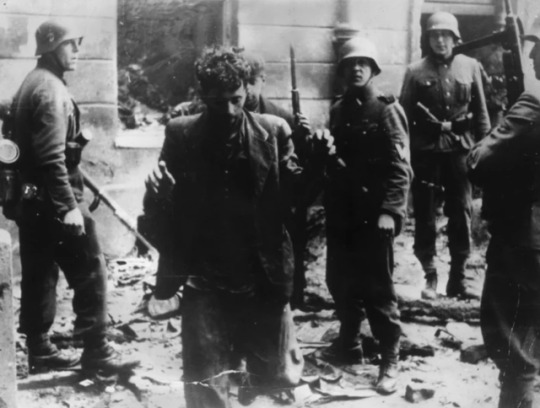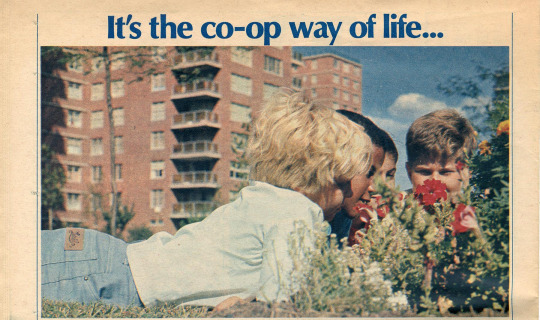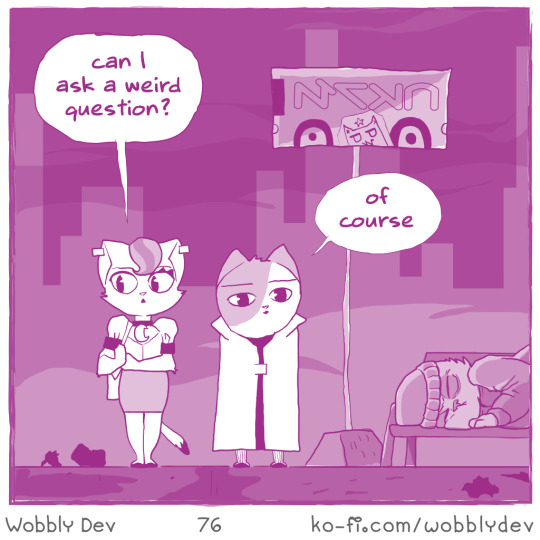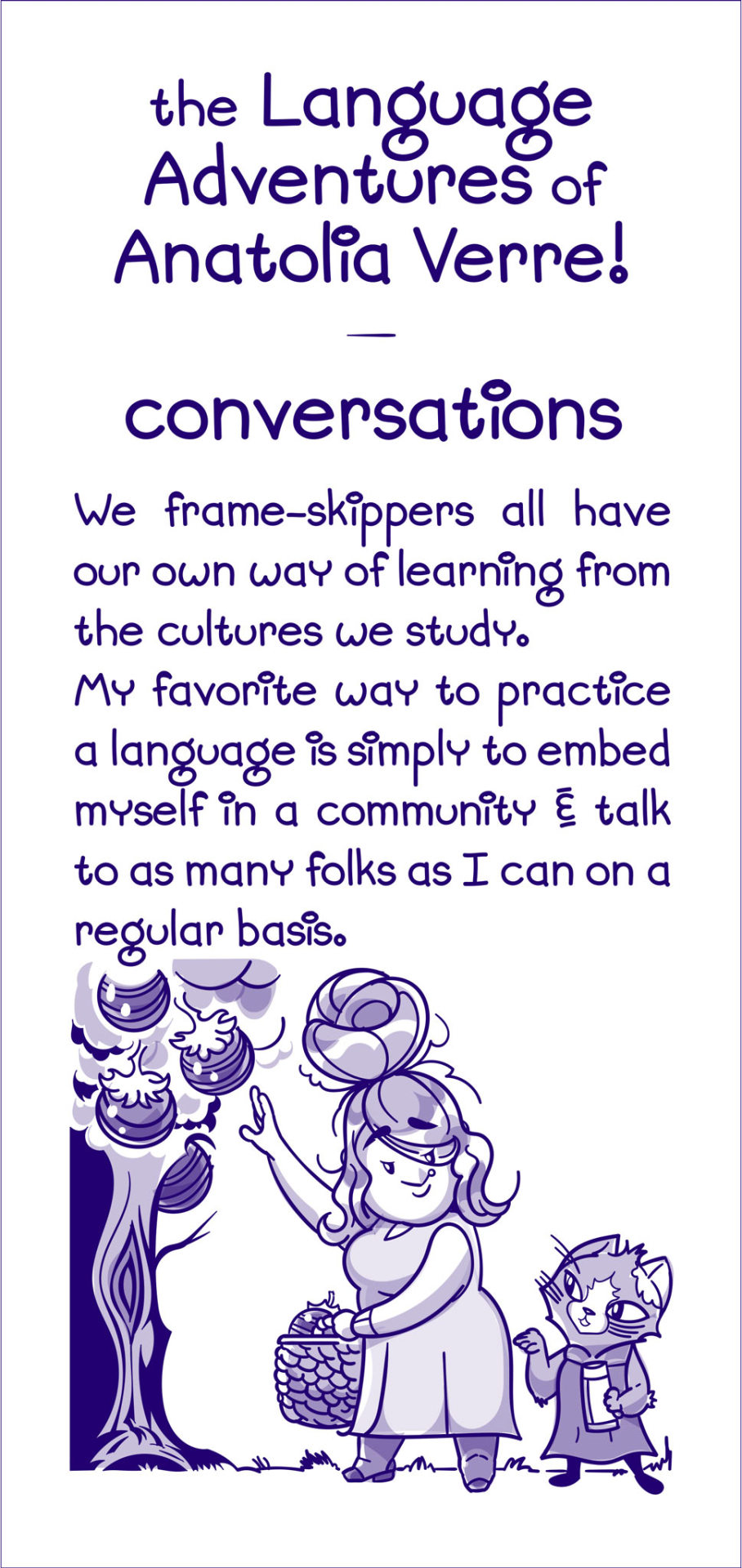#farband
Text

Before The Strike, page 76: "Kotsara"
BTS updates Wednesdays when i can
ko-fi.com/wobblydev
Full comic so far
#wobbly dev#wobblydev#syndical crossing#syndicalism#before the strike#web comic#beforethestrike#farband#bts
33 notes
·
View notes
Text

The Machine (vol 1), by Song Goodrise
the most famous work of syndicalist thought in Farband's history. Song Goodrise wrote and edited the first volume while imprisoned for treasonous acts. she would complete and publish the full treatise upon her release. the book gave rise to the three primary syndicalist ideologies which would shape the movement towards the great strike.
15 notes
·
View notes
Text


Flag Wars Bonus Round
10 notes
·
View notes
Text
At the turn of the 20th century, the northern edge of the Bronx—which now includes some of the poorest neighborhoods in New York City—was dotted with the grand estates of Gilded Age capitalists. By the 1920s, however, the villages of the Bronx had been incorporated into the growing city of New York. Hoping to attract real estate speculators, the city extended subway access to the area and opened it to development.
Between 1926 and 1929, thousands of working-class Jewish city residents, many living in slum conditions on the Lower East Side, pooled their money and built large cooperative developments in the Bronx. Labor Zionists built the Farband Houses, Yiddish preservationists built the Sholem Aleichem Houses, and the Amalgamated Clothing Workers of America—a union led by Abraham Kazan, a social democrat who would go on to become New York’s most prolific cooperative developer—built the Amalgamated Houses. “In the late twenties,” Calvin Trillin quipped in The New Yorker 50 years later, “a Jewish garment worker who wanted to move his family from the squalor of the lower East Side to the relatively sylvan North Bronx could select an apartment on the basis of ideology.”
5 notes
·
View notes
Photo

Uncredited Photographer Two Unnamed Jewish Resistance Fighters Captured by the Nazis During the Warsaw Ghetto Uprising 1943
Today marks to 76th Anniversary of the beginning of the Warsaw Ghetto Uprising, during which several hundred young Jews who had spent the last three years of their lives locked in a walled in ghetto, starved, denied medical care, crammed into a tiny space, brutalized and witness to the murder of hundreds of thousands of comrades, friends, family and neighbors decided they’d had enough and went into armed revolt against the Nazi barbarians. The initial spark for the Uprising came when the Nazis tried to carry out a mass deportation of the remaining population of the Ghetto to the death camps on the eve of the Pesah holiday. The organized resistance in the Ghetto was made up of roughly 1,000 people, some 600 hundred of them in the leftist ŻOB (Żydowska Organizacja Bojowa in Polish, ייִדישע קאַמף אָרגאַניזאַציע Yidishe Kamf Organizatsie in Yiddish, or Jewish Combat Organization) and another 400 in the right wing ŻZW (Żydowski Związek Wojskowy in Polish, אידישע מיליטעריש פֿאַרבאַנד, Yidishe militerish farband in Yiddish-Jewish Military Union). Of the membership in the resistance, only around 400 were fighters, since that was all the weapons they had. The Jewish units were armed primarily with molotov cocktails and small arms smuggled to them by the general Polish resistance, especially the Communist Gwardia Ludowa (People’s Guard). According to Marek Edelman, the only one of the commanders of the left-wing ŻOB to survive the Uprising, the ŻOB had 220 fighters and each was armed with a handgun, grenades, and Molotov cocktails. His organization had three rifles in each area of the Ghetto, as well as two land mines and one submachine gun. As no commanders of the ŻZW survived, their weaponry is unknown, but is assumed to be similar. Needless to say, the fascists had over 2,000 healthy, well fed, well trained troops, armed with modern assault weaponry, artillery, armored vehicles, flame throwers as well as sub- and full machine guns to conduct their murderous assault, along with several hundred Polish police and a few Soviet defectors to back them up. Despite being heavily outnumbered and out armed, the Ghetto fighters managed to hold off the Nazi scum for almost a month, from April 19-May 13, before the Nazis burned the Ghetto to the ground, killing most of its remaining inhabitants and putting an end to the Uprising. The few survivors of the Resistance who escaped the Nazis fled to the forests, where they joined up with anti-fascist partisan bands to continue the fight against fascism. Many of those few survivors took part in the general Warsaw uprising against the Nazis a year later.
48 notes
·
View notes
Text
Top Insurance Companies in USA
Who are the best disaster protection organizations? What is the best extra security arrangement?
These are two of the most every now and again posed inquiries with regards to buying disaster protection inclusion. Life coverage is significant money related to buy. With actually several extra security organizations out there viewing for your business, how would you realize you're picking the correct one?
It takes involvement and learning
The best extra security organization will be the one that will offer you the best disaster protection inclusion dependent on your wellbeing, way of life and general protection needs. So as to locate the ideal extra security inclusion, it frequently requires working with an accomplished and proficient life coverage operator that can help all the while.
Top Quote Life Insurance works with a few of the most prevalent and well-regarded disaster protection organizations in the U.S. We are always keeping awake to date with the most recent changes to guaranteeing specialties and qualities towards therapeutic issues just as the wide range of one of a kind inclusion choices, approach riders and changes to rates.

Top Insurance Companies in USA:
A
Acuity Insurance
Affirmative Insurance
Aflac
Allianz Life
Allied Insurance
Allstate
Ambac
American Association of Insurance Services
American Automobile Association
American Family Insurance
American Fidelity Assurance
American Modern Insurance Group
American National Insurance Company
American Share Insurance
American Strategic Insurance
Amerigroup
Ameriprise Auto & Home Insurance
Amica Mutual Insurance
AmTrust Financial Services
Arbella Insurance Group
Armed Forces Insurance
Arthur J. Gallagher & Co.
AssuredPartners NL
Asurion
Atlantic Mutual Insurance Company
Auto-Owners Insurance
AXA Equitable Holdings
B
Bankers Life
Beacon Health Options
Berkshire Hathaway
Berkshire Hathaway GUARD Insurance Companies
Berkshire Hathaway Travel Protection
Blue Cross and Blue Shield of Alabama
Blue Cross Blue Shield of Massachusetts
Blue Shield of California
BlueCross BlueShield of South Carolina
Brighthouse Financial
Brown & Brown
Build America Mutual
Burns & Wilcox
C
California Casualty
California Earthquake Authority
California Major Risk Medical Insurance Program
CareFirst BlueCross BlueShield
Central States Indemnity
Chubb Limited
Cincinnati Financial
Citizens Insurance
Citizens Property Insurance Corporation
CNO Financial Group
Colonial Life & Accident Insurance Company
Colonial Penn
Columbia Insurance Group
Commerce Insurance Group
Commerce National Insurance
Commonwealth Land Title Insurance Company
Compass Rose Benefits Group
Consolidated Indemnity and Insurance Company
CorVel Corporation
Country-Wide Insurance Company
Crawford & Company
CSE Insurance Group
CUNA Mutual Group
D
Denali Alaskan Insurance
The Doctors Company
E
Erie Insurance Group
Esurance
Evergreen USA RRG
F
Farband
Farmers Insurance Group
Federal Housing Administration
Federated Mutual Insurance Company
Fidelity and Deposit Company
Financial Guaranty Insurance Company
Fireman's Fund Insurance Company
First Colony Life Insurance Company
First Command Financial Planning
Fortress Re
G
GAINSCO
GEHA
GEICO
Gen Re
The General (insurance)
General Casualty Insurance
Genworth Financial
GetInsured
Global Commercial Credit
Golden State Mutual Life Insurance Company
Grange Insurance
Grinnell Mutual
Guarantee Security Life Insurance Company
Brotherhood Mutual Insurance Company
GuideOne Insurance
GuideWell
Guy Carpenter
H
Hagerty Insurance Agency
Hanover Insurance
Harleysville Group
Hartford Steam Boiler Inspection and Insurance Company
Hilb, Rogal & Hobbs Co.
Home State Life Insurance Company
HomeInsurance.com
I
Infinity Property & Casualty Corporation
Insurance Company of North America
Insurance Services of America
InsWeb
International Workers Order
Ironshore
J
Johnson & Higgins
K
K&K Insurance
Kansas Bankers Surety Company
Keenan & Associates
Kentucky Employers' Mutual Insurance
L
L.A. Insurance
The Leavitt Group
LegalShield
Lexington Insurance Company
Liberty Mutual
Life Care Funding
Lincoln Income Life Insurance Company
Lincoln National Corporation
Lockton Companies
LTC Financial Partners
M
Mapfre
MAPFRE Insurance
Markel Corporation
Marsh & McLennan Companies
Maryland Automobile Insurance Fund
Massachusetts Mutual Life Insurance Company
MBIA
Merchants Insurance Group
Mercury General
MIB Group
Missouri Employers Mutual
Mortgage Guaranty Insurance Corporation
Munich Reinsurance America
Mutual Benefit Life Insurance Company
Mutual of Omaha
N
National Association of Mutual Insurance Companies
National General Insurance
National Heritage Life Insurance Company
National Indemnity Company
NetQuote
NJM Insurance Group
Nodak Mutual Insurance Company
Nonprofits Insurance Alliance
North Carolina Mutual Life Insurance Company
The Norton Agency
O
Odyssey Re
OneBeacon
Oregon Mutual Insurance
P
Pacific Life
PEMCO
Penn National Insurance
Petplan
Physicians Mutual
Primerica
ProAssurance
Progressive Corporation
ProSight Specialty Insurance
Puerto Rico Automobile Accident Compensation Administration
R
R&R Insurance Services
Reinsurance Group of America
Reliance Insurance Company
Reliance Partners
Rising Medical Solutions
Root Insurance Company
RTW PlaceRite Alternative Return-To-Work
S
Safe Auto Insurance Company
Safeco
Safeway Insurance Group
SECURA Insurance
Selective Insurance
Sentry Insurance
Shoreline Managers
Society Insurance
Southern Aid and Insurance Company
SquareTrade
StanCorp Financial Group
Standard Insurance Company
State Accident Insurance Fund
Stewart Information Services Corporation
Symetra
T
Tokio Marine HCC
Travel Guard
The Travelers Companies
Triple-S Management Corporation
TriWest Healthcare Alliance
Trupanion
Tufts Health Plan
U
UniCare
Uniformed Services Benefit Association
United American Insurance Company
United Investors Life Insurance Company
UnitedHealth Group
Unum
Upland Mutual Insurance Company
USF&G
1 note
·
View note
Video
Far - Water & Solutions •Released In ‘98• Glad it got a vinyl pressed in 2003 • discovered them early ‘00 • For lovers of Thursday and early Thrice • #vinyl • #vinyligclub • #vinylcommunity • #vinylcollectionpost • #vinylcollector • #vinylporn • #vinyljunkie • #vinylism • #vinyladdict • #vinylrecord • #vinylgram • #vinyllover • #TheVinylHub • #Far • #FarBand • #shaunlopez https://www.instagram.com/p/Bxw3SZGgN_Z/?igshid=1sx0f1nclqb1d
#vinyl#vinyligclub#vinylcommunity#vinylcollectionpost#vinylcollector#vinylporn#vinyljunkie#vinylism#vinyladdict#vinylrecord#vinylgram#vinyllover#thevinylhub#far#farband#shaunlopez
0 notes
Photo

Far - Water & Solutions #farband #jonahmatranga #shaunlopez #Deftones #altrock #alternative #uturnaudio #uturn #Vinyl #record #vinylrecord #vinylporn #vinylopedia #audiophile #lp #instavinyl #vinylgram #vinyloftheday #nowspinning #33rpm #onelovevinylcommunity #vinylcollectionpost #vinyligclub #vinyljunkie #vinyladdict
#vinylcollectionpost#deftones#vinyljunkie#instavinyl#vinylporn#vinyl#vinylopedia#jonahmatranga#nowspinning#lp#alternative#audiophile#uturnaudio#uturn#vinyladdict#vinylgram#vinylrecord#vinyloftheday#33rpm#farband#altrock#shaunlopez#vinyligclub#onelovevinylcommunity#record
0 notes
Photo


IN THESE TIMES
Dr. James Peter Warbasse opined in the journal Co-operation, “Once the people of New York City lived in their own houses, but those days have gone. … The houses are owned by landlords who conduct them, not for the purpose of domiciling the people in health and comfort, but for the single purpose of making money out of tenants.” That was in 1919.
A century later, things have gone from bad to worse. A quarter of U.S. households pay more than half their income in rent. In New York City, homelessness has hit record levels.
Most activists can reel off a list of demands to address the housing crisis: rent control, community land trusts, affordable housing development. But one of the most effective strategies has been forgotten. A century ago, the labor movement in New York City planned and executed a bluntly practical solution to the problem of housing: Build it.
Today, more than 100,000 New Yorkers live in apartments built by the labor movement between 1926 and 1974, mostly through an organization called the United Housing Foundation. Roughly 40,000 still-affordable cooperative housing units—Amalgamated Houses, Concourse Village and Co-op City in the Bronx; Penn South in the heart of Manhattan; 1199 Plaza in East Harlem; Rochdale Village and Electchester in Queens; Amalgamated Warbasse in Brooklyn—stand as monuments to what an organized working class can achieve. This housing provides a bulwark against gentrification and a blueprint for ending the housing crisis. Let’s look at how it all got started, how it came to an end and what it would take for labor to build again.

RADICAL BEGINNINGS
The story begins in 1916 in Brooklyn’s Sunset Park, where immigrant workers from Finland found themselves overcharged for subpar housing. Members of the Brooklyn Finnish Socialist Club figured out they could build higher quality housing for less than it would cost to rent from a landlord. Sixteen families came together to form the Finnish Home Building Association. Their first construction project was financed by equity contributions of $500 each from six families, “comrade loans” totaling $12,000 from neighborhood residents and a $25,000 bank loan.
The first building, named Alku (Finnish for “beginning”), was completed that year. Within a decade, there were almost 30 Finnish-owned co-op buildings in Sunset Park, with carrying costs (a monthly maintenance fee paid by each household) around half the rent of similar apartments in privately owned buildings. Members were forbidden from selling their units at a profit to ensure lasting affordability. In a pattern that would be repeated for decades to come, the housing co-ops became part of a local co-op ecosystem that included a restaurant, bakery and grocery store.
This model of affordable housing cooperative was so new that state law had no legal classification for it until the 1920s. Alku soon inspired a wave of limited-equity cooperative development by other radical worker organizations.
In 1925, a Yiddish Communist group called United Workers began planning a housing cooperative in the Bronx. They raised money through bond sales advertised in the radical Yiddish daily Morgen Freiheit (“Freedom Tomorrow”) and were able to buy an empty tract of land next to Bronx Park. Tenants were recruited from the general public. The United Workers Cooperative Colony, known as “The Coops” (rhymes with “soups”), opened in 1927 and rapidly added a second building for a total of 2,000 residents. The neo-Tudor garden apartment building, encircling a central courtyard, was an escape from the suffocating windowlessness of Lower East Side tenements—and it was affordable. It was as much a political project as an economic one, with a 20,000-volume library, regular cultural and political programming, and involvement in the broader community through a network of co-op businesses, political support for local tenants and workers, and attempts at racial integration.
The Coops inspired other Jewish left organizations to launch similar projects, turning the Bronx into a hub for experiments in working class cooperative housing. The Arbeiter Ring (Workmen’s Circle) launched Shalom Aleichem houses across the park, followed by the Farband Houses, built by the Yidisher Natsyonaler Arbeter Farband (Jewish National Workers Alliance). And soon, a more powerful backer would help the co-op movement scale up across the city: labor unions.

HOUSE OF LABOR
The bulk of the 40,000+ units of limited-equity cooperative housing sponsored by the labor movement in New York City originated with an immigrant garment worker-turned-union organizer named Abraham Kazan.
Kazan was a true believer. In the 1960s, after he had completed tens of thousands of units of housing, Gov. Nelson Rockefeller told him in passing he would have done well if he had gone into business. Kazan replied, “I am a cooperator, interested only in building the cooperative commonwealth.”
Kazan immigrated to the United States in 1904 at age 15 to escape anti-Semitism in the Ukraine, and was influenced by anarchist ideas and a stint on a proto-Kibbutz in New Jersey. After helping organize a small strike at his job as a garment worker, he eventually went on staff with the International Ladies’ Garment Workers’ Union (ILGWU) and later the Amalgamated Clothing Workers of America. As a union staffer, he began promoting cooperatives. His first successful project was a consumer co-op business that provided 7,000 union members with sugar and matzo during World War I. He soon began dreaming of building housing.
Gathering rank-and-file garment workers and a handful of low-level union staffers, Kazan incorporated the group as “ACW Corporation,” using the union’s initials “to give the impression we had a Big Brother behind us in this effort”—though they lacked the union’s formal backing.

(A 1957 diagram shows how Amalgamated Houses and other cooperatives govern themselves: one member, one vote.)
It took the possibility of government support for Amalgamated to throw its weight behind co-operative housing. In 1926 New York state passed the Limited Dividend Housing Companies Law, granting condemnation rights and local tax abatements to housing companies that limited profits and restricted rents to affordable levels.
The ACW Corporation drew up plans to develop a 303-unit cooperative in the Bronx. It sold shares to future residents at $500 each (about three months’ pay for a union worker). The union-owned Amalgamated Bank agreed to loan each resident up to 50 percent of the cost of their equity stake, and the Metropolitan Life Insurance Company provided a $1.2 million mortgage. The Jewish Daily Forward also helped secure financing and provided short-term loans to cover cost overruns.
Ground was broken Thanksgiving Day 1926, and the first residents moved in the following November. By early 1928, the Amalgamated Houses were fully occupied. The cooperators (as co-op residents were called) soon launched a cooperative grocery store, milk delivery service and even a bus service to bring workers to the subway. In the decades that followed, the housing cooperative grew to around 1,500 units. The Great Depression wiped out many New York City cooperatives, but Amalgamated cooperators’ willingness to help support their neighbors—combined with cagey negotiations with creditors—helped them survive the Great Depression. Kazan’s model worked.
Soon more unions followed.In 1949, IBEW Local 3 President Harry Van Arsdale Jr. began planning a cooperative housing development called Electchester in Queens. Union members provided the labor, some paid and some volunteer. Over 17 years, Electchester expanded to 38 buildings with around 2,500 units of housing. Van Arsdale himself lived there. It became a social and cultural hub for the Local, with a bowling alley, auditorium, movie theater, cocktail bar, coffee shop, shopping center, library and a host of clubs and social organizations.
To popularize cooperative development with other unions and carry out projects on a larger scale, Kazan created the United Housing Foundation (UHF) in 1951, a coalition of organizations and individuals that included 19 unions. UHF was to be funded by a modest 1 percent fee on the cost of building each development. To carry out the actual construction work, Kazan created a second organization to act as general contractor, Community Services Inc., which built the housing and provided technical assistance.
The housing units were open to any worker, union or not, so long as they were below a limit on income. Applicants had to show up and wait in line on the day applications were accepted.
As the postwar era progressed, the stars would align for an unprecedented expansion of labor’s cooperatives, boosted by mainstream political support. But the patronage of New York City’s political class came with strings attached.

HOME FRONT
“We have wiped out the sweatshop; we return to wipe out the slum,” intoned ILGWU President David Dubinsky at the groundbreaking ceremony of the East River Houses in 1953, funded in part by his union. The brand-new red- brick towers loomed above the dilapidated low-rise tenements of the Lower East Side. This was where the parents and grandparents of so many New York City unionists had toiled doing garment work. Dubinsky’s generation saw it as their duty to eradicate exploitation from the blocks where they grew up.
In returning to wipe out the slum, these prodigal sons found unlikely allies in New York’s ruling class. Slum clearance policies made land available, and in 1955, labor helped pass the Limited-Profit Housing Companies Act, better known as the Mitchell-Lama program. It provided low-interest mortgages and tax abatements for limited- equity cooperatives and affordable rentals. Over 100,000 units of housing would be built under the program. More than half were cooperatives, the majority of which were built by Kazan’s UHF.
Political support was forthcoming in part because labor’s cooperatives fit within the “urban renewal” paradigm charted out by men like Parks Commissioner Robert Moses. In the postwar era, political elites across the U.S. reconfigured cities to force new patterns of mass consumption (car and home ownership) and racial segregation. The federal government provided guarantees for home loans to whites, facilitating white flight. Awash with federal subsidies and tax breaks, Moses and others used their powers under “slum clearance” laws to bulldoze neighborhoods to build highways and high-rise housing. They created a racialized hierarchy of urban housing: public housing for the poor (mostly people of color), cooperative housing for middle-income workers (mostly white), and private-market luxury for the white ruling class.
(Continue Reading)
#politics#the left#in these times#organized labor#labor movement#worker cooperative#worker co-op#affordable housing#social housing#democratic socialism
77 notes
·
View notes
Text
Contra la “evocación” de Goebbels
Contra la “evocación” de Goebbels
La Federación de Entidades Culturales de Argentina – Idisher Cultur Farband (ICUF Argentina) reclamó una declaración del jefe de Gobierno porteño, Horacio Rodríguez Larreta, tras denunciar que un conductor de la radio La 2×4 “evocó” al dirigente nazi Joseph Goebbels.
Se trata del programa “Metejón de un día”, que conduce Guillermo Marcos, los lunes de 20 a 22. “Estamos evocando en el día de su…
View On WordPress
0 notes
Text
KELLERFUND: Alte Schreibmaschine vom Opa Marke: Continental mit Koffer
KELLERFUND: Alte Schreibmaschine vom Opa Marke: Continental mit Koffer
Buy Now
Price: $55.00
Artikelmerkmale Verkäufernotizen: “Tastenfunktion ok Farband leider alle” Marke: Continental EUR 55,00
Angebotsende: Samstag Mai-26-2018 14:42:01 CEST
Sofort-Kaufen für nur: EUR 55,00
Sofort-Kaufen | Zur…
View On WordPress
0 notes
Text

Before The Strike, page 76
BTS updates Wednesdays when i can
ko-fi.com/wobblydev
Full comic so far
#wobbly dev#wobblydev#syndical crossing#syndicalism#before the strike#web comic#beforethestrike#farband#BTS
28 notes
·
View notes
Text


Flag Wars Bonus Round
4 notes
·
View notes
Video
Jonah Matranga - Paris 06/12/16 @jonahmatranga #jonahmatranga #farband #far #deftones #fortminor #thursday #lamecaniqueondulatoire #voulezvousdanser #otb #oldtownbicyclette #bnw #onstage #folk #gig #paris #show (à La Mécanique Ondulatoire)
#farband#paris#lamecaniqueondulatoire#far#jonahmatranga#voulezvousdanser#bnw#thursday#gig#deftones#oldtownbicyclette#fortminor#show#onstage#otb#folk
0 notes
Text

Before The Strike, page 74: yes, no, unsure and indifferent
BTS updates every Wednesday? (i sure try to)
ko-fi.com/wobblydev
Full comic so far
#wobbly dev#wobblydev#syndical crossing#syndicalism#before the strike#web comic#beforethestrike#farband#bts
24 notes
·
View notes
Text




Conlang Corner 12.25.2023
vocabulary will no longer include pronunciation notes. if this is annoying, let me know 🙀
send me a dm if you would like a calligraphy of your name in Fuss!
the conlang corner is updated every Monday!
https://ko-fi.com/wobblydev
#conlang corner#monday#yes i know its tuesday today#this one was complicated#wobbly dev#conlang#fuss#farband
30 notes
·
View notes